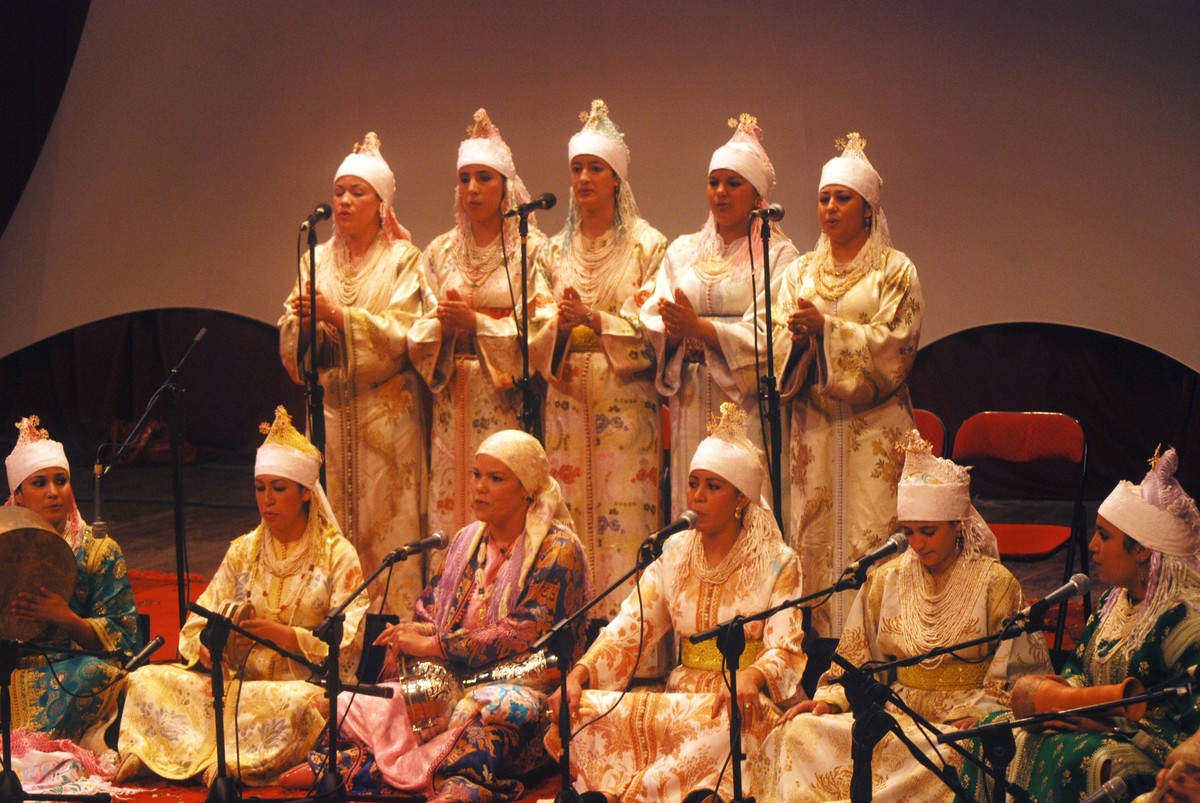DUBAI: “We are not scientists. This is not a historical show. It is a sensorial show,” says Jean-Hervé Vidal, one of the two artistic directors behind “On the Roads of Arabia,” billed as “a masterpiece of music and motion that promises to be one of the most dazzling events of the Louvre Abu Dhabi’s anniversary week.”
Commissioned by the museum to complement the exhibition “Roads of Arabia: Ar-chaeological Treasures of Saudi Arabia,” the 75-minute musical and artistic per-formance will explore music, dance and poetry from across the Arabian Peninsula, Africa, the Mediterranean, India, Indonesia and China. It will also be delivered by performers dressed completely in white.
“The performance is linked to the exhibition, but firstly to the museum,” says Vidal, whose creative partner on the production is Mehdi Ben Cheikh, perhaps best known for the “Paris Tour 13 Project,” which saw 108 street artists paint a dilapi-dated apartment block in Paris prior to its demolition. “The values of the museum are the values of humanism. They cross cultures and this is the first aim of the mu-seum, which inspired us.”
The musicians — who include Faisal Al-Labban and the Ensemble Al-Bahhara from Jeddah and Iraqi singer Farida Mohamed Ali — were primarily assembled by Vidal, who founded the world music agency Zaman Production in France in 2006. Pro-moting an artistic universe that is dedicated to music and dance, he originally col-laborated with Ben Cheikh, the founder of the Galerie Itinerrance in Paris, back in 2015 for a production at the Musée du Quai Branly – Jacques Chirac.
That production, called “White Spirit,” was in many ways a precursor to “On the roads of Arabia,” fusing music and street art to create a performance directly in-spired by Sufi spirituality and Arabic calligraphy. Central to that show was the Tu-nisian street artist Shoof. Now it’s the turn of his compatriot Mohamed Koumenji, better known as Koom.
During the three performances at the Louvre Abu Dhabi, Koom will produce his abstract calligraphy live, using white paint on a white background. The artwork will be made visible via the use of specific lighting.
With him on stage will be 80 musicians, singers and dancers from across the Arab world and beyond, including the Ensemble Rhoum El Bakkali from Morocco, the Zewditu Yohannes Ensemble from Ethiopia, and Ghewar Khan Manghanyar from India. They will perform individually, with the exception of a collaboration between Ali and Al-Labban, backed by the UAE’s Al-Ayyala Dance Troupe.

“The performance in Louvre Abu Dhabi is a continuity for us,” says Vidal, who is also the show’s producer and co-scenographer alongside Alain Burkarth. “The aim is similar to what we did (with ‘White Spirit’) but of course we have adapted it. We have produced the performance for Louvre Abu Dhabi to create a sensorial mirror to the exhibition.”
That exhibition was originally developed by the Saudi Commission for Tourism and National Heritage (SCTH) and the Musée du Louvre in 2010, and is set to run from November 8 until February next year. Already hosted by 15 museums across Eu-rope, the US and Asia, it highlights the cultural heritage of the Kingdom and in-cludes ancient artifacts from both Saudi Arabia and the UAE.
“It is an evocation of what the roads of Arabia were, and what they are today as well,” says Vidal. “Because it’s not just the past. It’s people who are living now and their memories and their heritage.
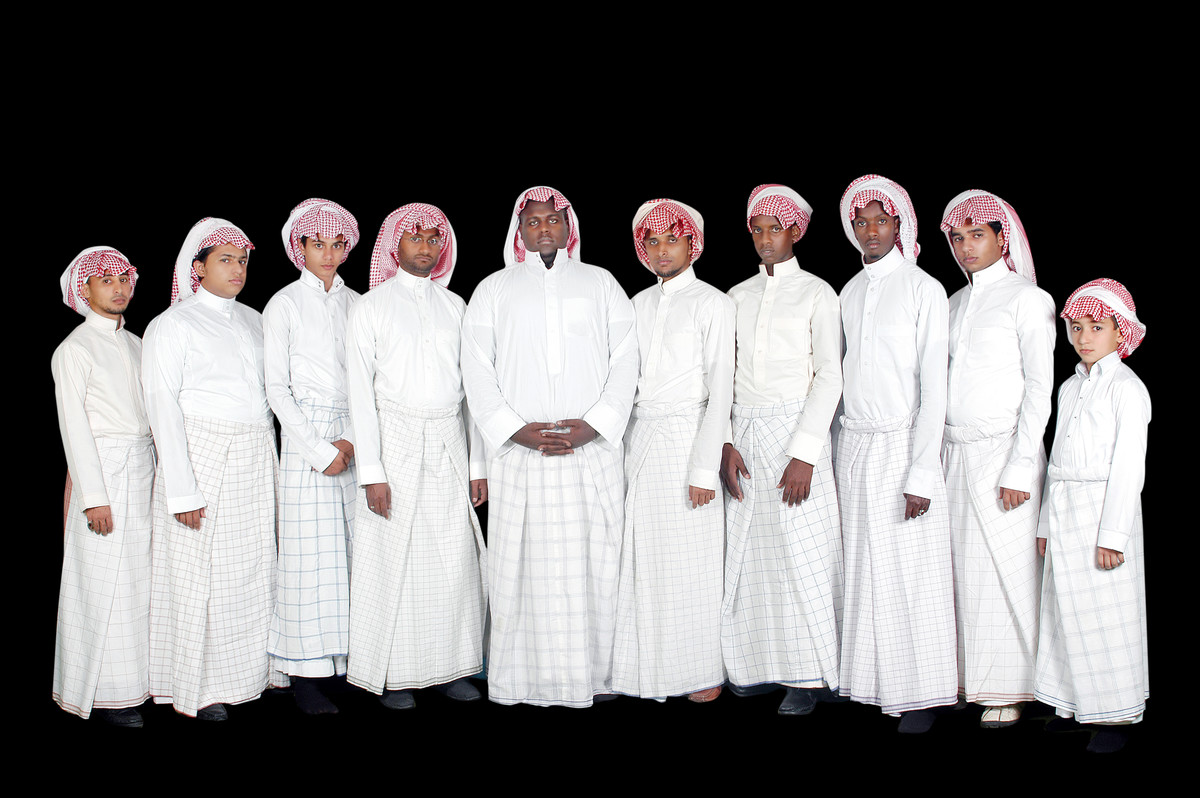
“Everybody will be on stage during the performance, but it does not make sense for them to play together. They have to play what they know. We will create unity in other ways: Through visual ways, and of course through musical links during the performance. Everybody will be able to listen to the others and that creates some-thing. It will create a link between them.”
Organizing a performance that includes so many artists has not been easy, with “the flights, the planning, and the busy schedules” necessary to bring it all together providing a challenge for Vidal and his team. “But we did it,” he says.
“The street art performance by Koom will create a harmony for everything,” ex-plains Vidal, who worked alongside Christophe Olivier (lighting), Eric Bodard (sound), and producer Mouna Hamed during the creation of the production. “There will be a lot of different aesthetics on stage — music, dance, art — even if everybody will be in white. At the same time they will have a feeling of harmony, of unity, on stage, thanks to the artist and thanks to the visual creation.
“This performance is not about creating a historical approach to the roads of Arabia. It’s not about creating an intellectual approach either. We make art. We make music. We work in a sensitive way. And I hope people will be surprised by what they see.”
MEET THE STARS
Some of the artists performing in ‘On the Roads of Arabia’
Farida Mohamed Ali (Iraq)
It’s hard for anyone to become a maqam singer — it requires a mastery of ex-traordinarily complex melodies and scales and a thorough understanding of the philosophy behind them. Ali, then, already enjoys rarefied status. Traditionally, though, maqam singers are men, so she really is in a class of her own, as her name — which translates as ‘one of a kind’ — suggests.
Ali has described maqam as “more than simply music: it is bound up with culture, food, spiritualism. It is a way of life.” She specializes in maqam Al-baghdadi, which requires the singer to improvise within the genre’s particular ‘rules.’ The Chicago Tribune described her 2001 US performance as providing “the swelling sweetness of Bonnie Raitt wrapped around the gale-force power of Pavarotti.”
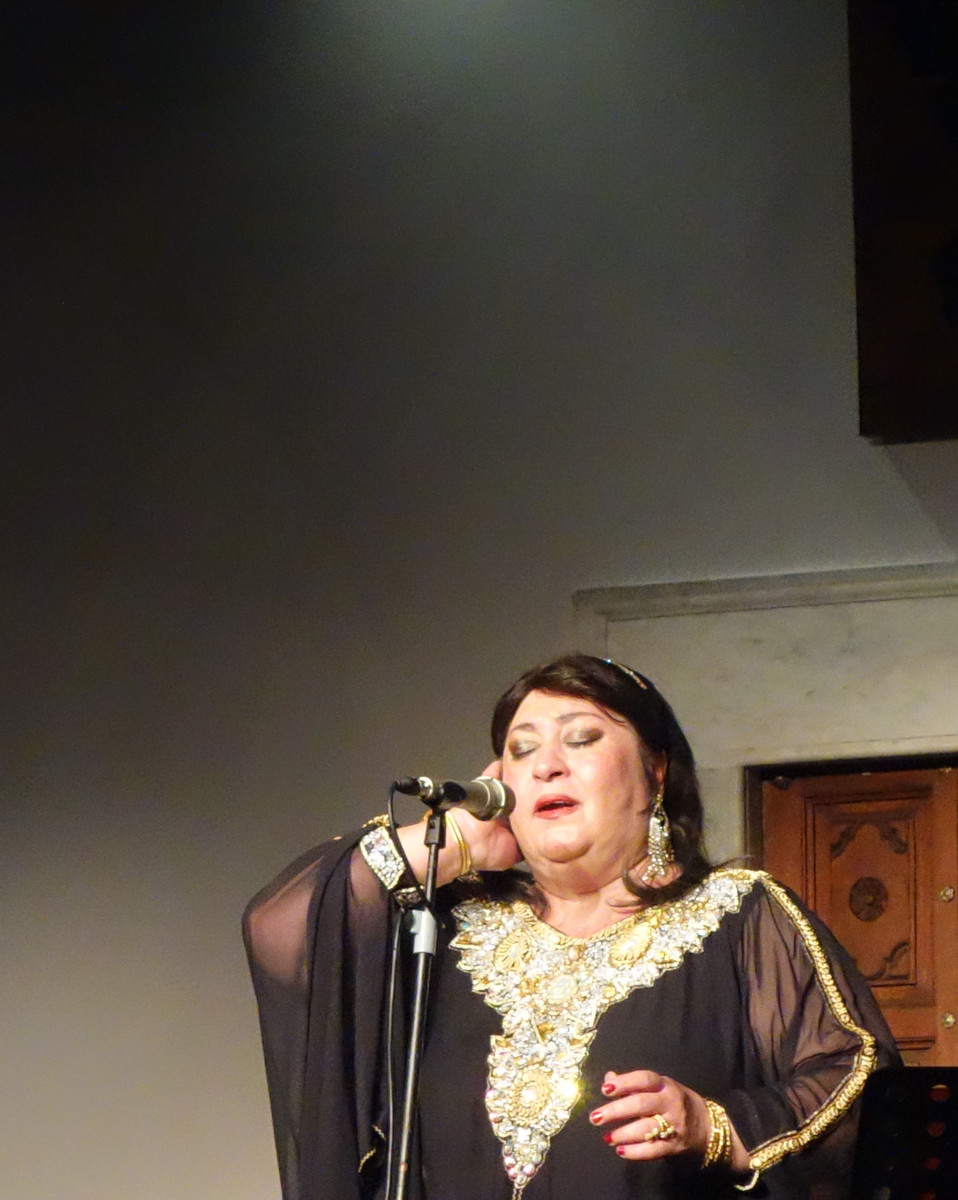
Ghewar Khan (India)
A master Rajasthani folk musician, Khan plays the traditional bowed string instru-ment the kamaicha. He hails from the Manganiyar tribe, members of which — he claims — are the only ones who can play the kamaicha properly. For centuries, the folk musicians of Rajasthan lived like nomads, crossing the desert to perform at weddings, funerals, parties and feasts for anyone who could afford to have them play.
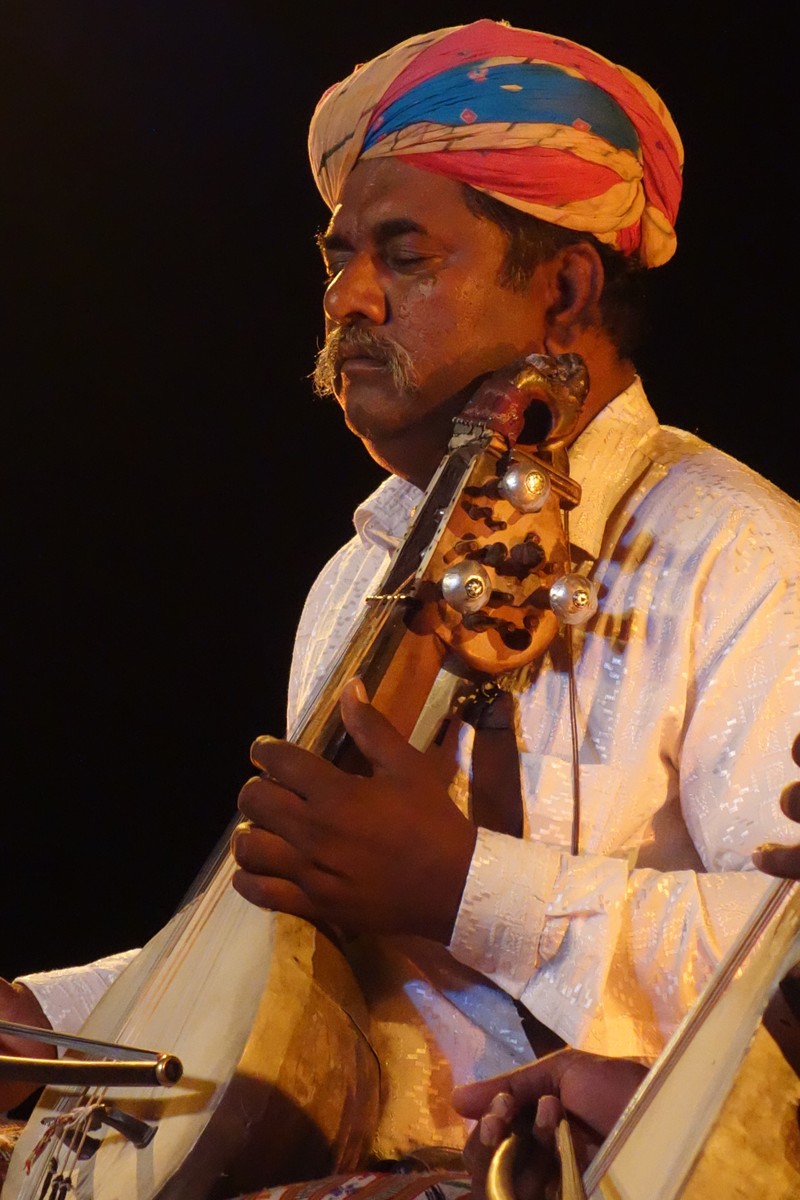
Lingling Yu (China)
Born in the city of Hangzhou, the starting point of the Silk Road, Yu is recognized as one of the world’s finest pipa (the four-stringed Chinese lute) players. Yu rose to fame as a child prodigy, featuring in a Chinese documentary series — “Young Music Genius” — when she was 13. Now living in Switzerland, she was nominated for the Swiss Grand Award for Music in 2016, and teaches traditional Chinese music at the Geneva University of Music.
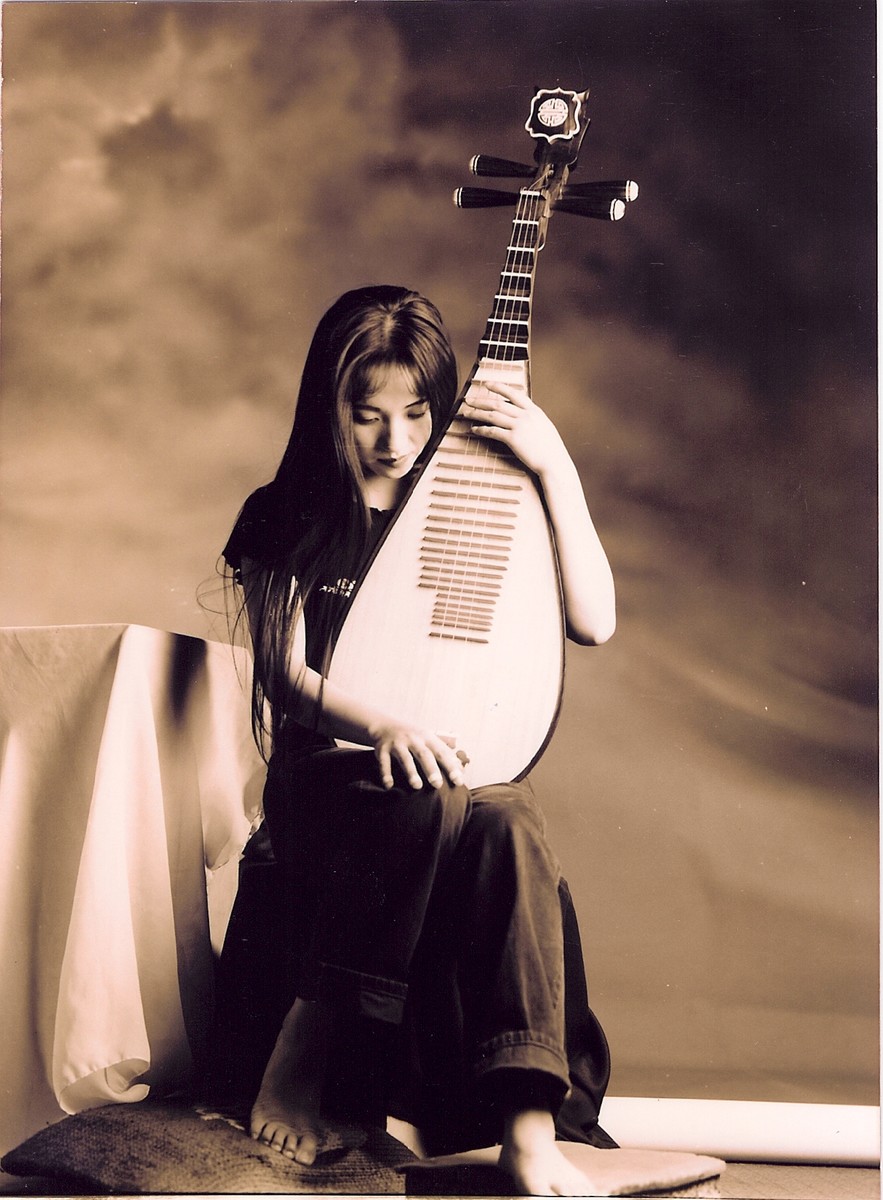
Ensemble Rhoum El Bakkali (Morocco)
This Moroccan all-female troupe, led by Rahoum Bekkali, combine the Sufi art of Hadra — a mix of poetry, music and dancing — with traditional folk music and Ar-ab-Andalusian influences to create a unique art form that they have toured around the world.
